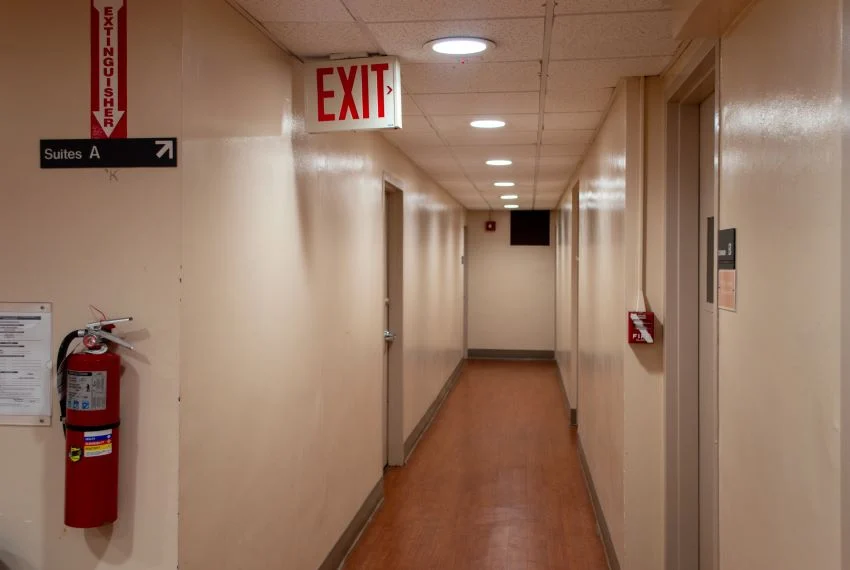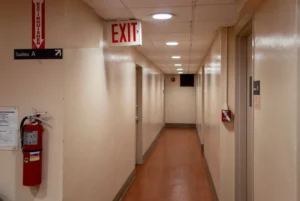
Public buildings, whether schools, hospitals, shopping centres, or government offices, serve large numbers of people daily. Ensuring the safety of these occupants is a fundamental responsibility of building owners and managers. Among the various safety measures, emergency lighting stands out as an essential component, providing critical illumination during power outages or emergencies. Without it, even well-marked exits and evacuation plans can become ineffective, leading to confusion and increased risk of injury. Partnering with innovative emergency lighting manufacturers allows public buildings to benefit from the latest safety technology and energy-efficient designs.
Supporting Fire And Evacuation Safety
In an emergency, visibility is vital. During a fire, smoke can quickly obscure vision, and if the main power supply fails, navigating a building becomes far more difficult. This is where well-planned Fire Safety Systems work hand-in-hand with emergency lighting.
Emergency lights illuminate escape routes, stairways, corridors, and exit points, allowing occupants to evacuate safely and efficiently. These systems also help emergency responders locate people who may be trapped or disoriented. By integrating emergency lighting with fire alarms and detection systems, building safety is significantly enhanced.
Choosing The Right Partner For Installation
Selecting a reliable security system supplier is a critical step in ensuring your emergency lighting setup meets both safety requirements and operational needs. An experienced supplier will assess the building’s layout, occupancy levels, and potential hazards before designing a tailored solution.
They can also ensure that emergency lighting integrates seamlessly with other building safety measures, such as surveillance and alarm systems. Ongoing maintenance and regular inspections, provided by a trusted supplier, guarantee that the system will work flawlessly when needed most.
Meeting Legal And Regulatory Standards
In many regions, building codes mandate emergency lighting in public facilities. These requirements ensure that, in the event of a power failure, sufficient illumination is available for safe evacuation. Compliance is not only a legal obligation but also a moral one—providing reassurance to occupants that their safety has been prioritised.
Regulations often specify minimum lighting levels, duration of operation during outages, and placement of units along escape routes. By staying up to date with these standards, building managers can avoid costly penalties and, more importantly, protect lives.
The Role Of Quality Manufacturing
The installation of reliable, efficient, and long-lasting emergency lighting equipment is guaranteed by the collaboration with reputable manufacturers. High-quality lighting units often feature long-life LED technology, robust battery backup systems, and durable construction designed to withstand various environmental conditions.
Manufacturers that focus on innovation are also introducing smart systems capable of self-testing, reporting faults automatically, and integrating with building management platforms. This reduces the maintenance burden on facility staff while ensuring the system remains in peak condition.
Enhancing Safety Beyond Fires
Emergency lighting is essential during a fire, but it’s also critical for other events like storm-related power outages, electrical malfunctions, or natural disasters. In these scenarios, sudden darkness can cause panic or accidents, especially in crowded areas.
Illuminated pathways help maintain order and allow security personnel to guide people to safe locations. In facilities like hospitals, where patients may have mobility challenges, clear and consistent lighting is even more critical for safe evacuation or relocation.
Integration With Modern Technology
The future of emergency lighting lies in smart technology. Systems are now available that can be monitored remotely, integrated with other safety infrastructure, and programmed for energy efficiency. This means lights can be tested automatically, faults flagged immediately, and operational data stored for compliance audits.
Integration with other building systems ensures a coordinated emergency response. For example, lights can be programmed to guide occupants toward the safest exits based on real-time hazard detection.
Long-Term Value And Reliability
Investing in quality emergency lighting is not just about meeting current regulations—it’s about long-term protection. Durable systems require fewer replacements, reducing maintenance costs over time. Energy-efficient designs also lower utility bills, making them a financially sound choice for public facilities.
Regular inspections and proper servicing extend the lifespan of the system while ensuring it’s ready to perform when needed. A combination of robust manufacturing, professional installation, and consistent maintenance creates a dependable safety net for building occupants.
Final Thoughts
Emergency lighting is far more than a backup feature—it’s a lifeline in critical situations. From enhancing fire safety systems to ensuring compliance with legal requirements, its role in public buildings cannot be overstated. By partnering with a skilled security system supplier and choosing equipment from trusted emergency lighting manufacturers, building managers can create a safety infrastructure that works seamlessly under pressure. The lighting conditions during an emergency can determine a safe and orderly evacuation.




